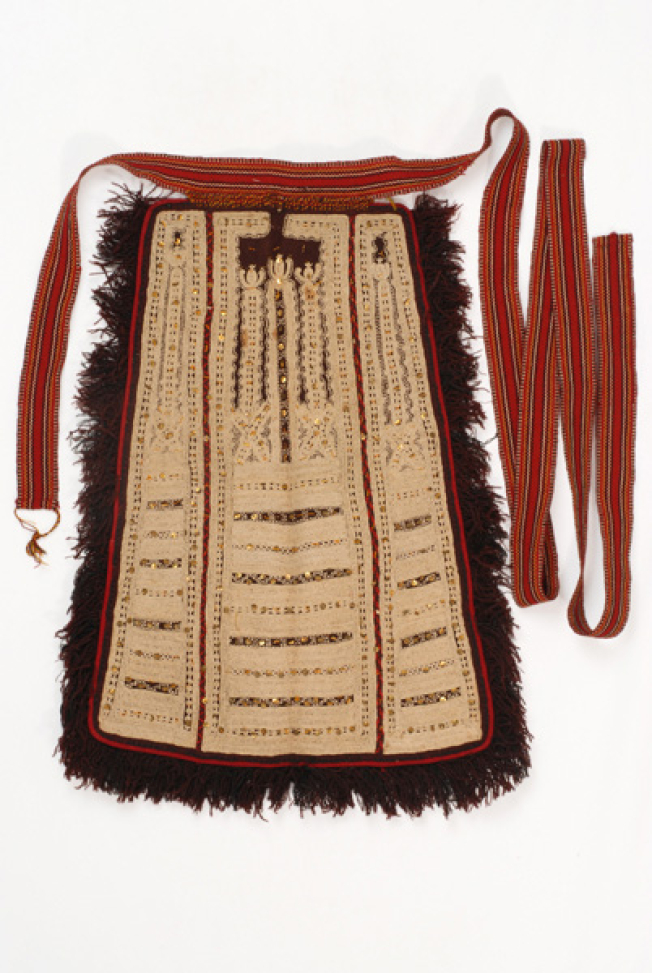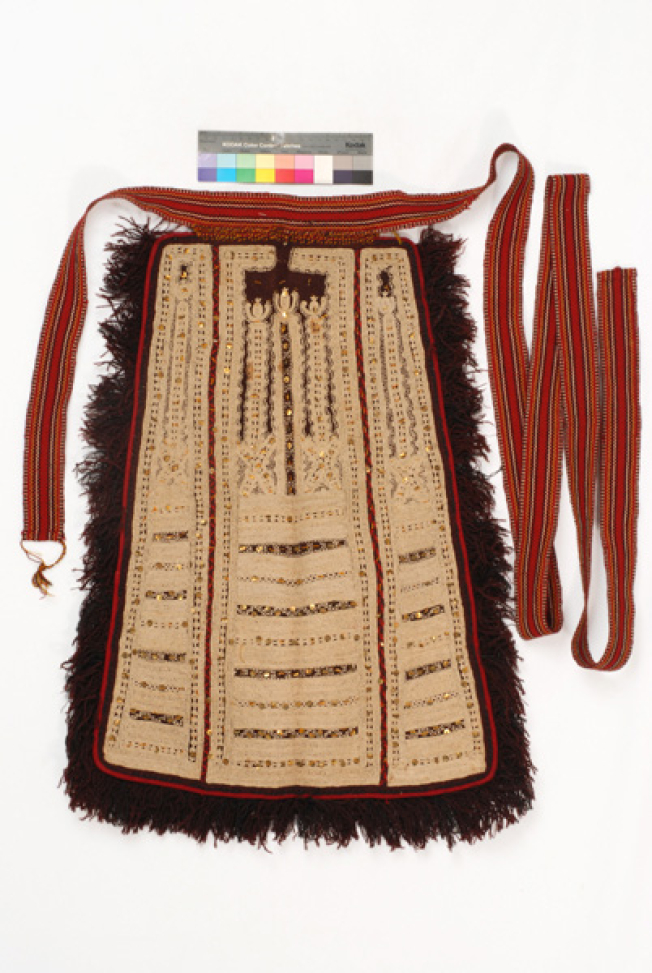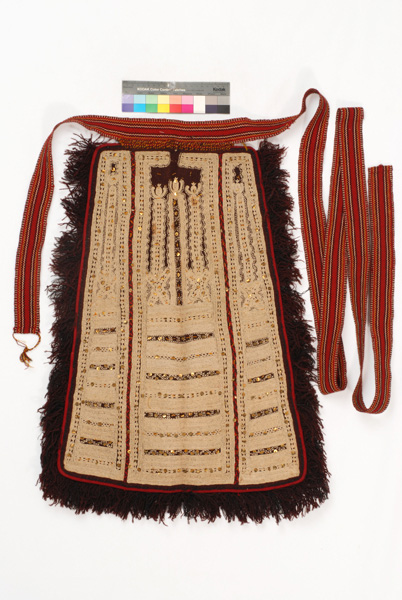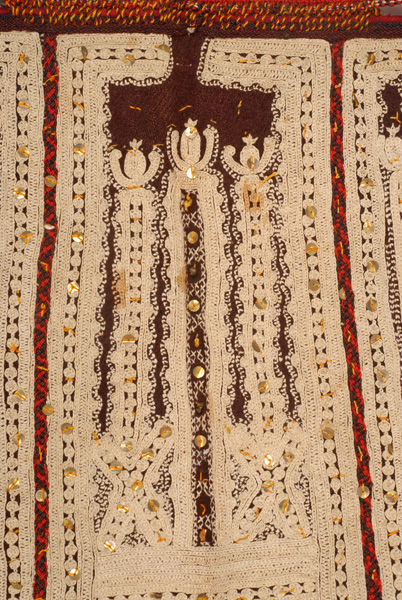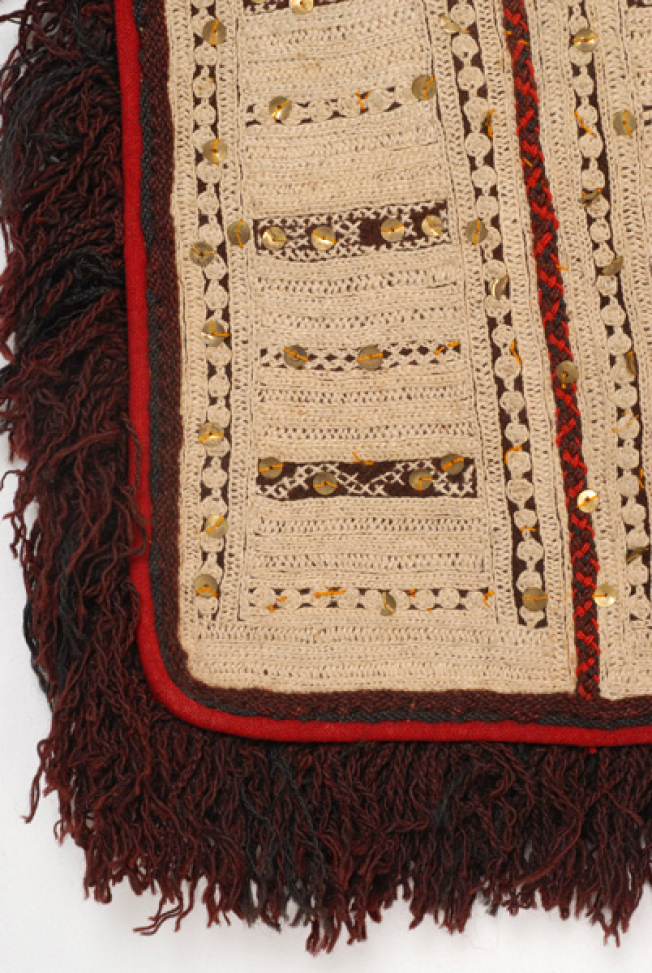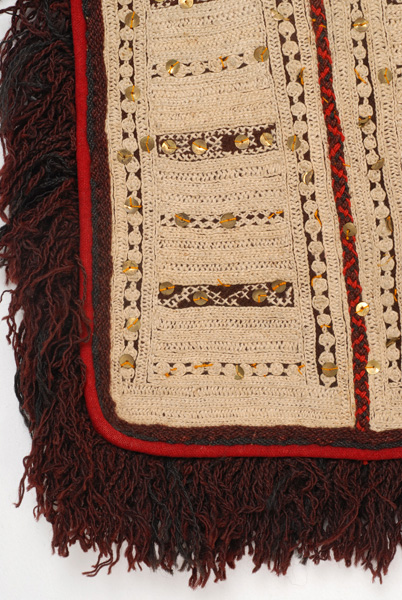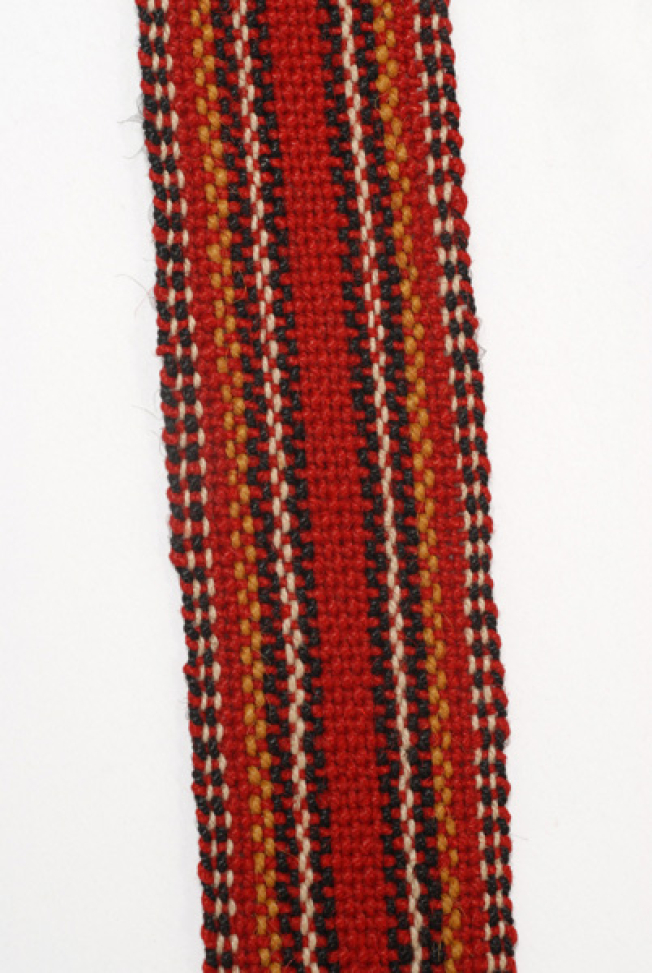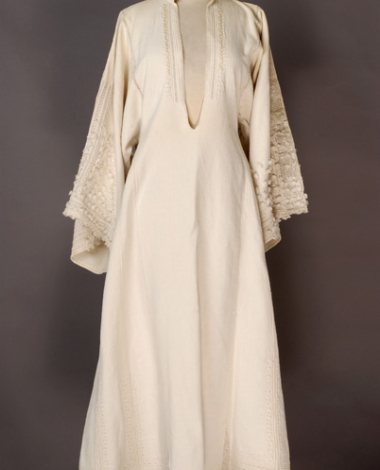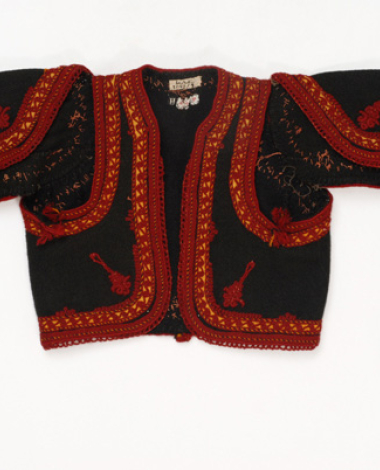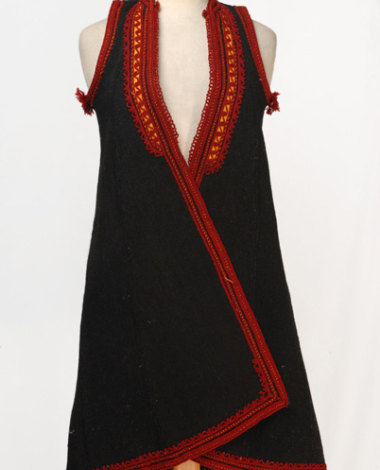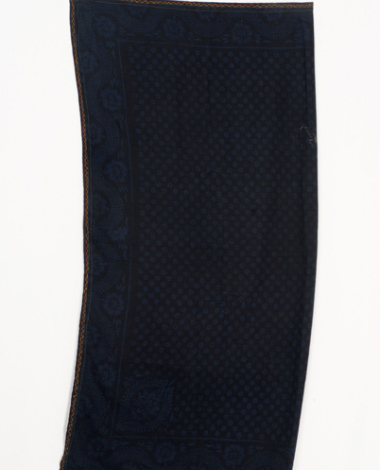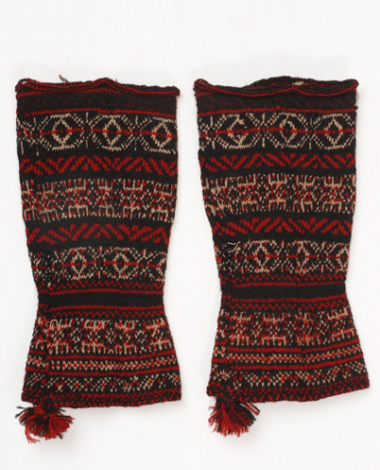apron
1042/1,δ
Rammatenia podia (apron) with an extra steni zoni (narrow belt)
Rammatenia podia (apron) with an extra steni zoni (narrow belt)
Detail of the embroidered decoration with linen rammata and applique spangles. At the panel joint, embroidery with colourful woollen thread
Detail of the decoration: edging with red felt and small tassels at the end
Object Identity
Object ID Number
1042/1,δ
Object name
apron
Other / Local name
podia rammatenia and steni zoni
Style
peasant, costume with sigouni (sleeveless woollen coat)
Production date range
end of 19th century
Production date (circa)
1870-1890
Part of outfit
Yes
Physical Description
Description
Ποδιά ραμματένια, τρίφυλλη τραπεζιόσχημη, ολόγυρα ρελιασμένη με κόκκινη τσόχα. Είναι καμωμένη από βυσσινί δίμιτο σαγιάκι (μαλλί της νεροτριβής) και αποτελείται τη μάνα, κεντρικό, ίσιο φύλλο, και τα λαγκιόλια, πλαϊνά, λοξά φύλλα. Περιμετρικά φέρει φουντάκια από το ίδιο μαλλί. Ράβεται και σερετώνεται από το ράφτη και κεντιέται με λινά άσπρα ράμματα από τις γυναίκες. Έτσι, καλύπτεται σχεδόν όλος ο σαγιακένιος καμβάς από ταινιόσχημα θέματα, αφήνοντας μόνο κατακόρυφες στο πάνω μέρος και οριζόντιες στο κάτω λωρίδες υφαντού. Τη διακόσμηση συμπληρώνουν μεταλλικές πούλιες στερεωμένες με κίτρινη μεταξωτή κλωστή. Οι ενώσεις των φύλλων είναι διακοσμημένες με κέντημα από κόκκινες, μαύρες και βυσσινί μάλλινες κλωστές. Στην πάνω οριζόντια πλευρά της ποδιάς είναι στερεωμένη επίρραπτα η στενή ζώνη, ζωνάρι, μήκους 3,20μ. και φάρδους 4,5εκ. Φοριέται πάνω
από το ζωνάρι και πριν την ποδιά, συχνά όμως συναντάται και ραμμένο στην ποδιά, όπως εδώ. Υφαίνεται από τον ανυφαντή στον αργαλειό χωρίς χτένι και σαΐτα από στημόνι κόκκινο, κίτρινο, μαύρο και λευκό (το μόνο βαμβακερό) και υφάδι μαύρο, οπότε σχηματίζονται οριζόντιες ρίγες.
Decoration & Patterns
Decoration
geometric decoration
Decorative patterns / subjects
-
Height
0.630
Width
0.310
Production
Maker / Designer / Brand
Apron: tailors, women themselves. Sash: weaver
Production date range
end of 19th century
Production date (circa)
1870-1890
Production place (Country | Geographic Area | Prefecture & Region)
Greece |
Epirus |
Thesprotia
Paramythia
Material
cotton thread
felt
fullen wool fabric
linen thread
silk thread
spangles
wool thread
Techniques
applique
embellished
embroidery
handwoven fabric
handwoven fabric,
dimity fabric
handwoven fabric,
nerotrivi (fulling-tub), madani (hydro power system)
industrially woven textile
Use
User
woman
Occasion
festive
Date range
end of 19th century
Date (circa)
1870-1890
Place of use (Country | Geographic Area | Prefecture & Region)
Greece |
Epirus |
Thesprotia
Paramythia
Acquisition
Acquisition method
Untraced Find
Publications
Object publication history
Documentation
Research bibliographic references
Image license
Use the file or the thumbnail of the image according to the license:
CC BY-NC-ND 4.0
Attribution-NonCommercial-NoDerivatives





